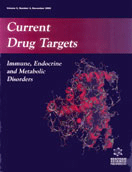Abstract
Vpr is a 96-amino acid auxiliary regulatory protein that is packaged in the HIV-1 virion. It enhances the nuclear transport of the pre-integration complex, and regulates cell cycle, transcription and apoptosis. These biological activities suggest strongly that Vpr interacts with cellular biochemical pathways to regulate HIV-1 replication and pathogenesis. The karyophilic property of Vpr appears to be due to direct interaction of Vpr with nuclear transport factors and residents of the nuclear pore complex, whereas transcriptional effects of Vpr may be exerted through direct and indirect mechanisms. Cell cycle arrest at the G2 / M checkpoint by Vpr is correlated with the hyperphosphorylation of Cdc2. The pro-apoptotic activity of Vpr is dependent on the subtype of the HIV-1 isolate, and may be dramatically enhanced by a single L64P mutation. Mitochondria- and caspase-dependent mechanisms appear to mediate Vpr-induced apoptosis. Recent evidence suggests that Vpr interacts with a cellular ubiquitination machinery and promotes degradation of Vpr mutants carrying the L64P mutation. Vpr interaction with the ubiquitination machinery may contribute to the regulation of the HIV-1 life cycle at various stages. NMR studies of V pr have shown a Vpr monomer with three helical domains arranged in a twisted-U shape. However, Vpr most likely exists as a trimer in vivo. Structural / functional domains have been tentatively mapped for Vpr induction of apoptosis and for Vpr interaction with the ubiquitination machinery. Structural refinement of Vpr, specially by crystallography of the potential Vpr trimer, should help design therapeutic approaches to specifically target Vpr.
Keywords: vpr, apoptosis, subtype, ubiquitin, nmr, domain, gag, p6



















